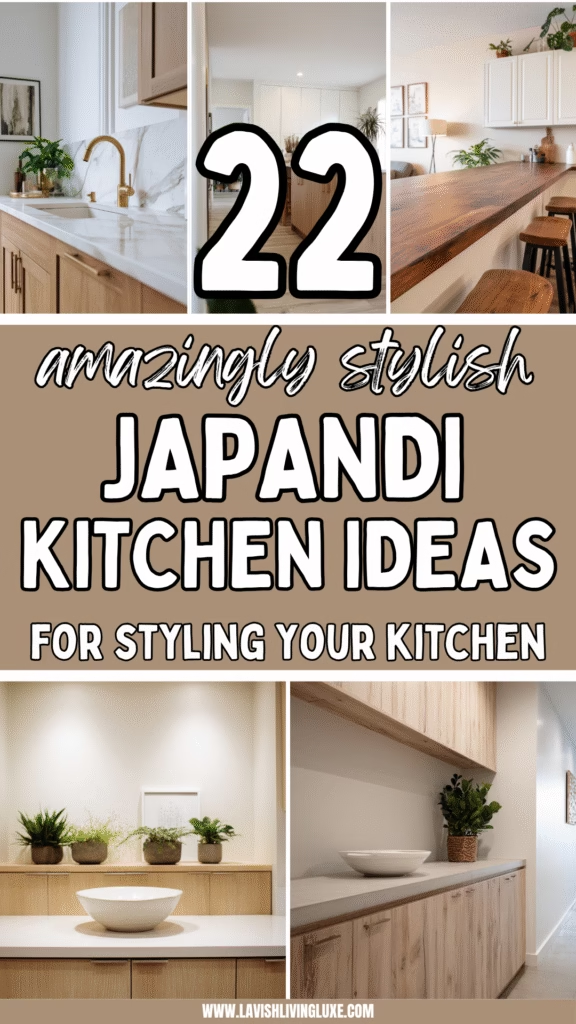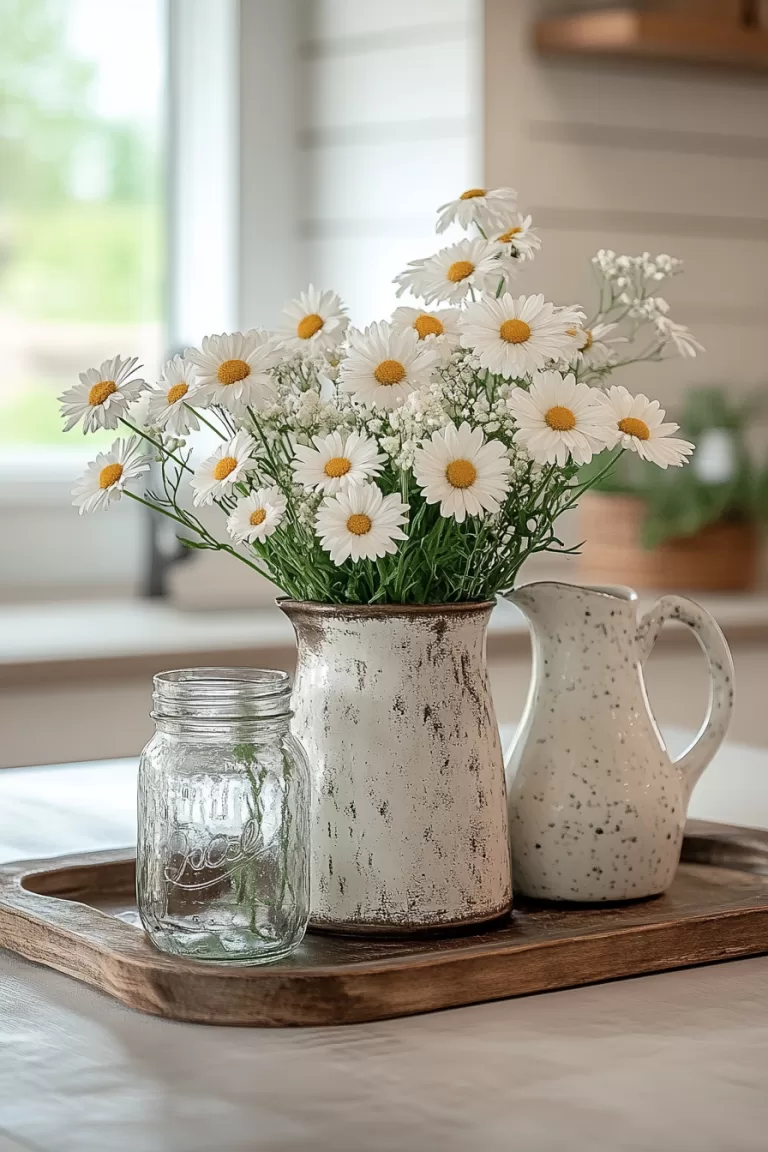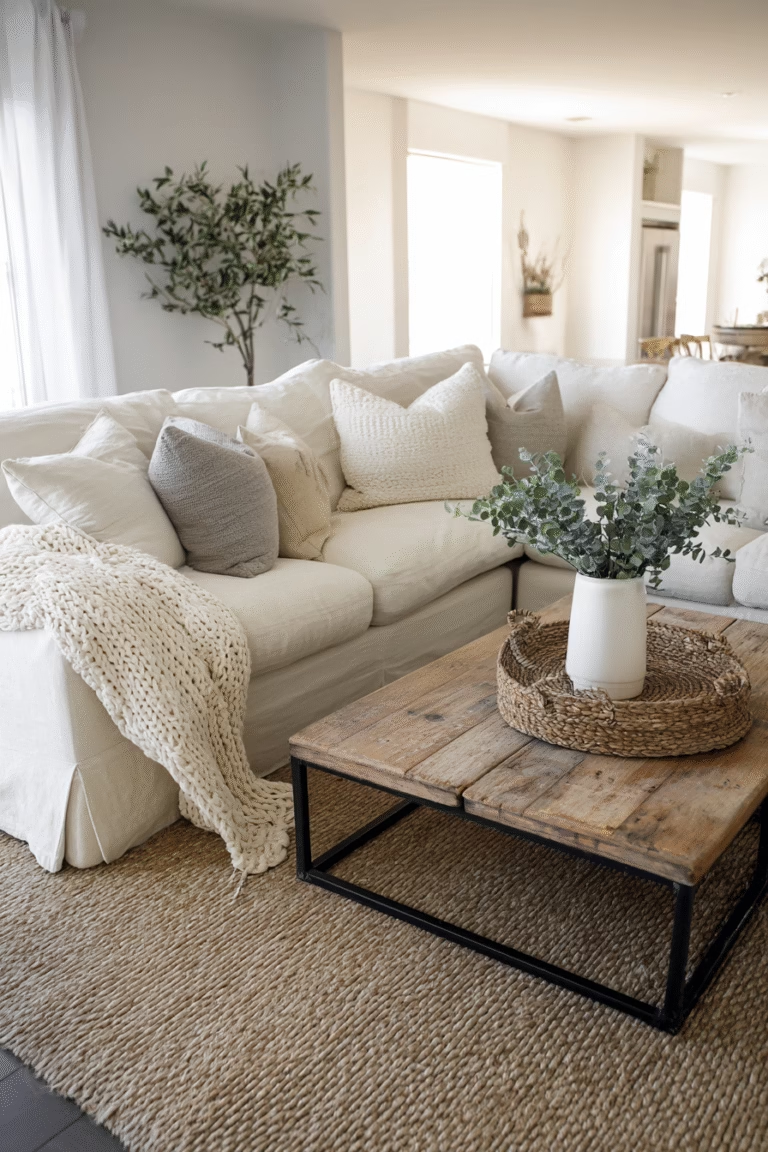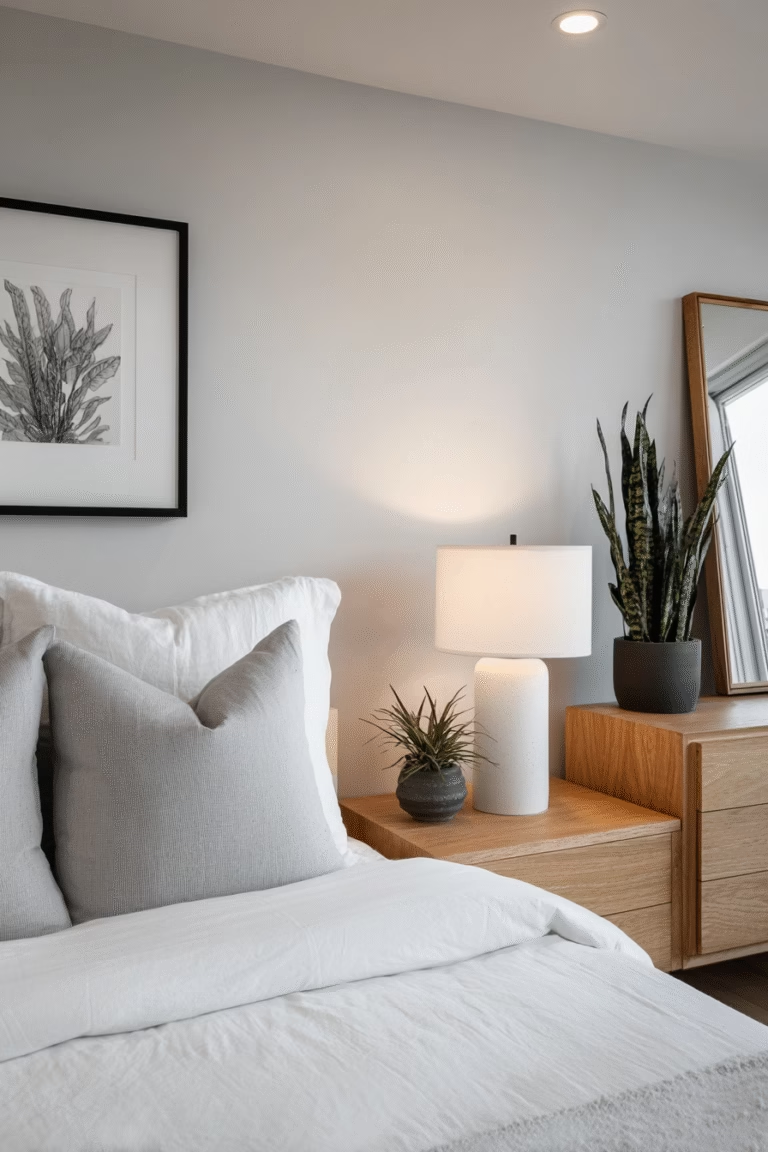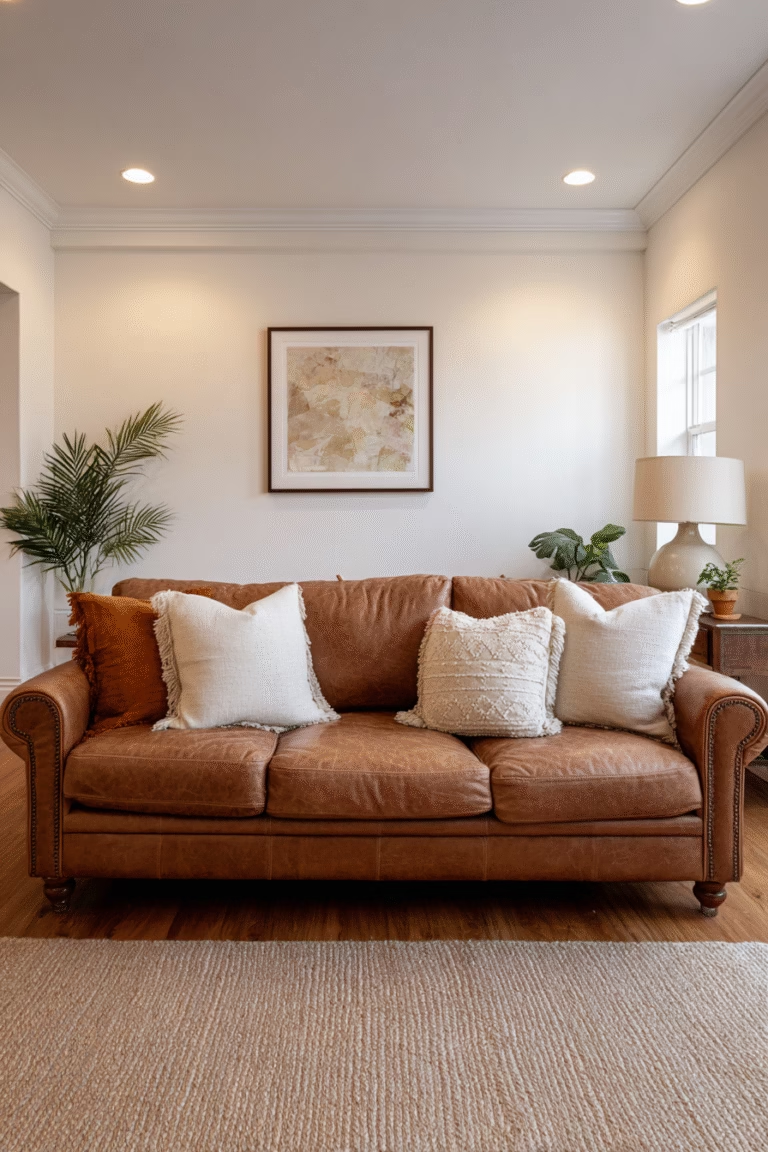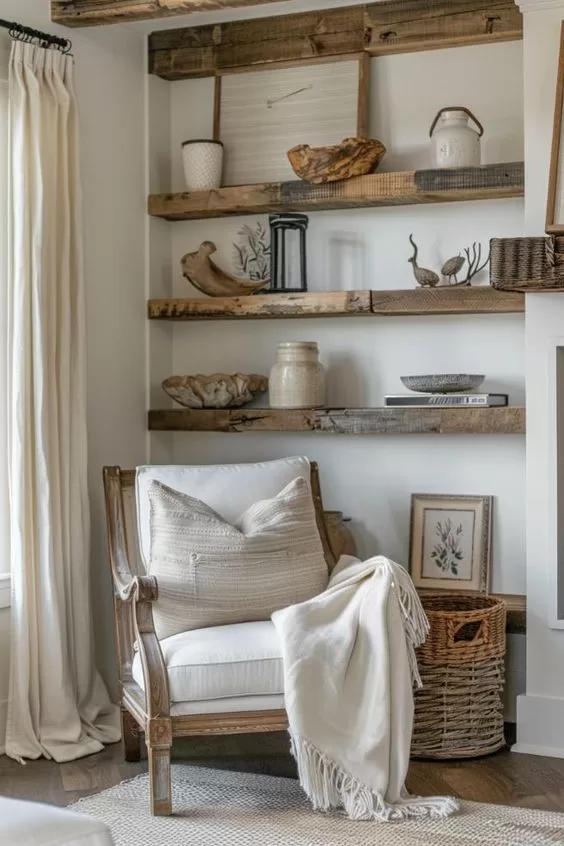22 Japandi Kitchen Ideas to Create a Gorgeous Kitchen
This site contains affiliate links. As an Amazon Associate, I earn from qualifying purchases. The content on this website was created with the help of AI. Please read our Editorial Policy for more information.
Ever walked into a kitchen and instantly felt calmer? That’s the magic of Japandi design. This style brings together Japanese minimalism with Scandinavian coziness to create cooking spaces that feel peaceful, functional, and seriously stylish.
Here’s the thing—Japandi isn’t about stripping your kitchen down to nothing. It’s about choosing every element intentionally. Think clean lines mixed with natural warmth, neutral tones paired with organic textures, and spaces that actually work for how you cook and live.
Ready to transform your kitchen into a space that makes you want to linger over your morning coffee? These 25 Japandi kitchen ideas will show you exactly how to get that balanced, beautiful look without overthinking it.
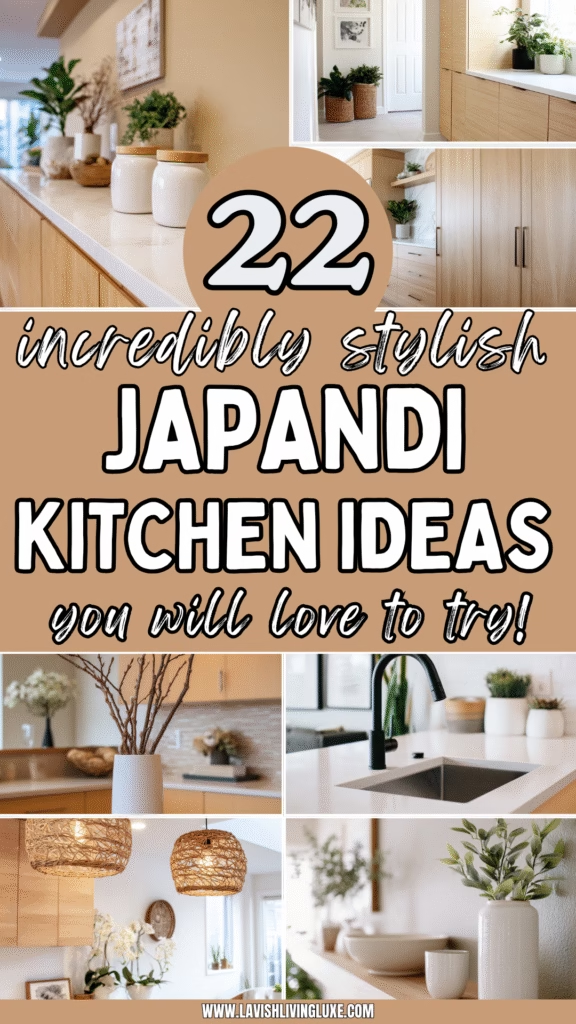
22 Japandi Kitchen Ideas to Create a Gorgeous Kitchen
1. Light Oak Flat-Panel Cabinets
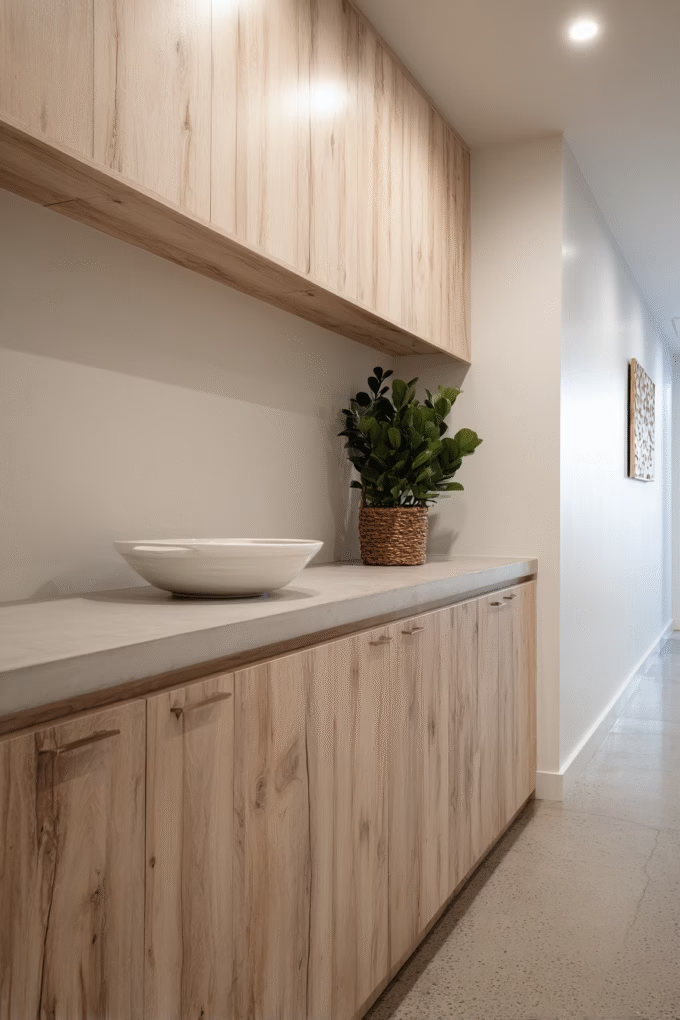
Light oak cabinets are basically the foundation of any Japandi kitchen. The natural grain adds warmth without being loud about it, and the flat-panel style keeps everything clean and streamlined.
These cabinets work beautifully when you pair them with white or cream walls. The wood tone grounds your space while the simple silhouette keeps things modern. Skip any ornate details or raised panels—those don’t belong here.
Look for cabinets with minimal or hidden hardware. Push-to-open mechanisms work great, or choose simple metal pulls in brushed brass or matte black. Your cabinets should feel like they’re part of the walls, not fighting for attention.
2. Stone Countertops with Natural Veining
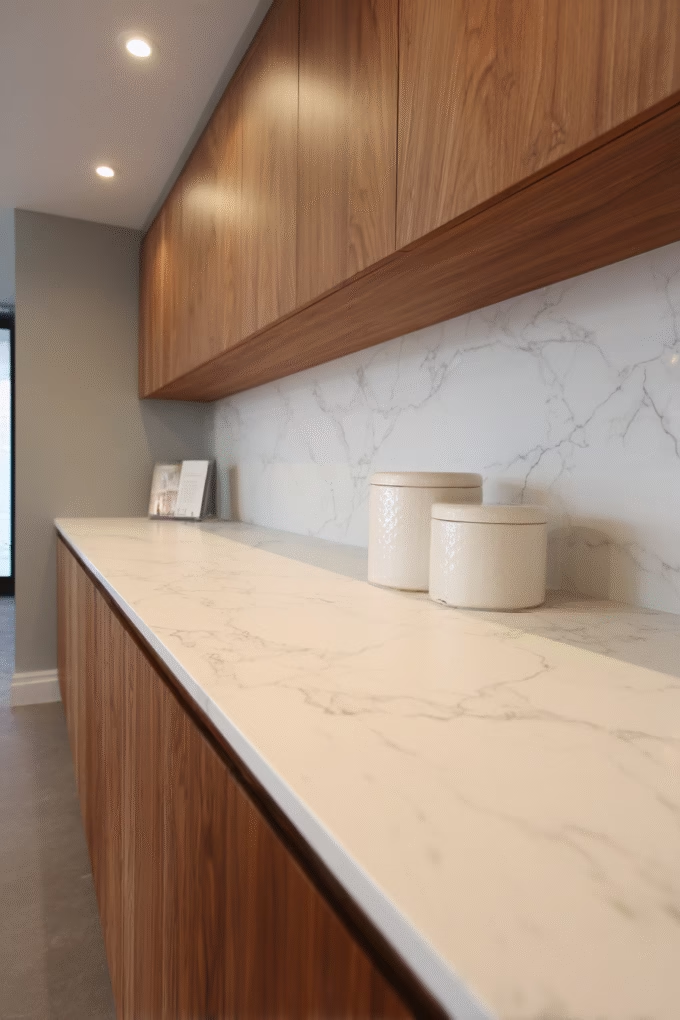
Stone countertops add texture to your Japandi kitchen without going overboard. The natural veining in materials like marble or quartzite creates visual interest while staying subtle and sophisticated.
Choose stones in neutral colors—white, cream, gray, or beige. The striations should feel organic, not busy. Avoid bold patterns or high-contrast veining that screams for attention.
Pair your stone countertops with wood cabinets to create that perfect balance between cool and warm elements. The contrast adds depth to your kitchen while keeping everything harmonious.
3. Handleless Cabinet Fronts

Handleless cabinets are a Japandi kitchen essential. They create seamless, uninterrupted surfaces that make your cooking space feel larger and more open.
These cabinets use push-to-open mechanisms or recessed finger pulls instead of traditional handles. The result is clean, flat surfaces that look almost architectural. Your eyes can travel across the cabinetry without catching on hardware.
This approach works with any cabinet color—white, wood tones, or even black. The lack of hardware lets the material and color be the star without competing details.
4. Large Pendant Lights Over Island
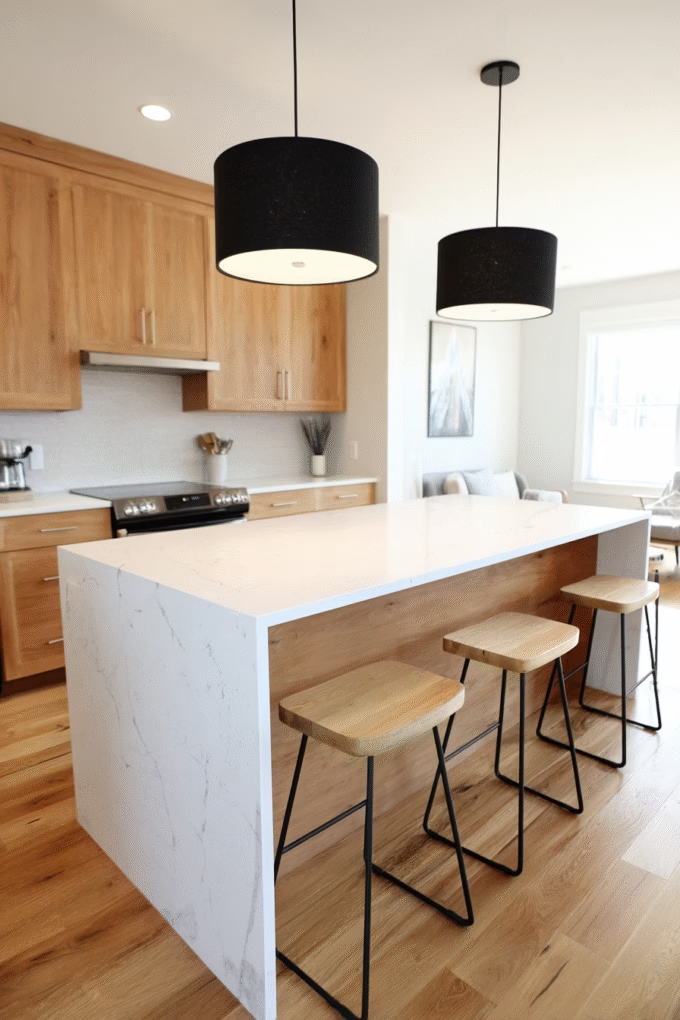
Statement pendant lights add personality to your Japandi kitchen while providing essential task lighting over your island. Look for fixtures with simple, sculptural shapes in natural materials.
Choose pendants in materials like ceramic, paper, woven rattan, or metal with matte finishes. The shapes should feel intentional—spheres, cylinders, or simple geometric forms work beautifully. Avoid anything too ornate or fussy.
Hang them at the right height so they illuminate your workspace without blocking sight lines across the kitchen. Two or three pendants create better balance than a single large fixture.
5. Live-Edge Wood Island Countertop
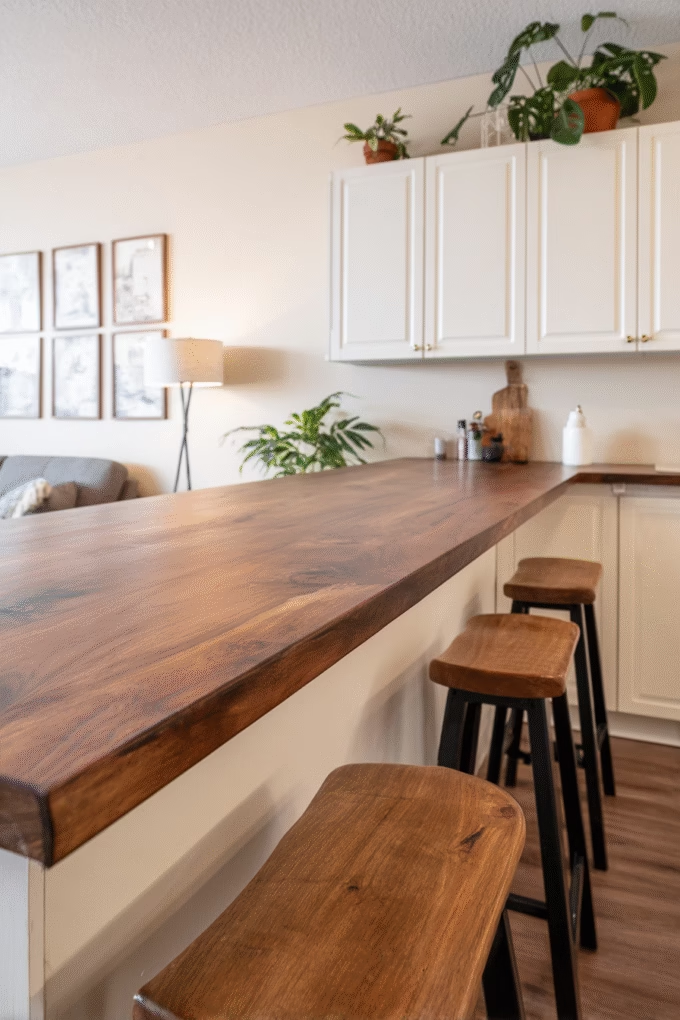
A live-edge wood island countertop brings organic beauty into your Japandi kitchen. The natural edge of the wood slab adds character while staying true to the style’s connection with nature.
Choose wood species with beautiful grain patterns—walnut, oak, or maple all work wonderfully. The live edge should feel like a subtle accent, not the entire focus. One or two edges with natural bark or curves is enough.
This works best when the rest of your kitchen stays minimal. Let the wood be the statement piece while surrounding elements keep things calm and balanced.
6. Open Wooden Shelving
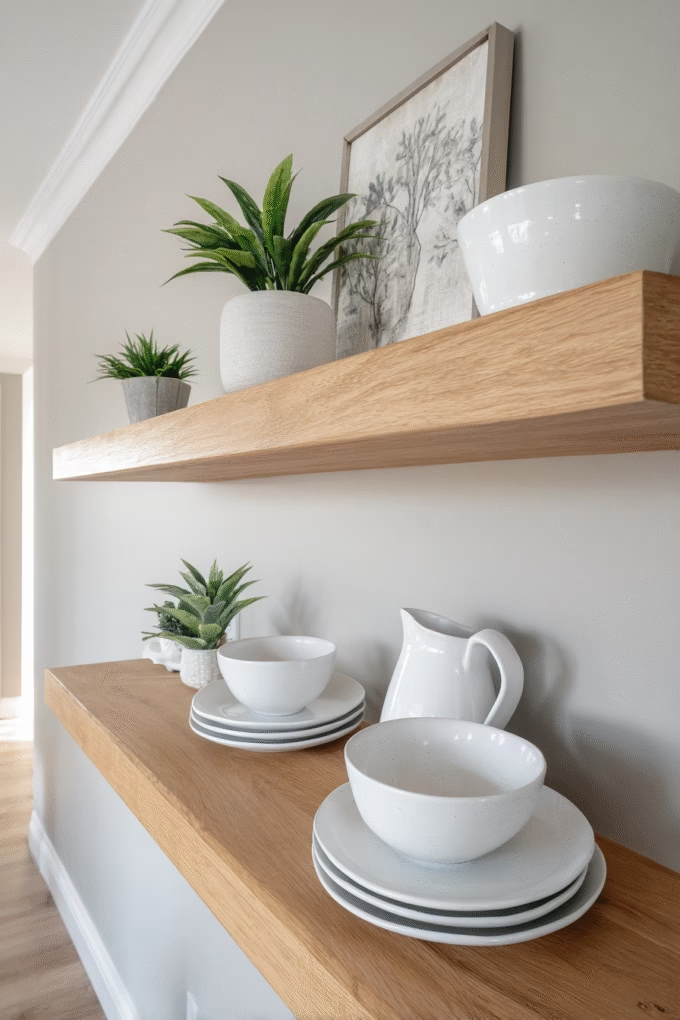
Open shelving in natural wood adds warmth and functionality to your Japandi kitchen. These shelves let you display essential items while keeping your space feeling airy and accessible.
Mount floating shelves in light oak, maple, or ash to coordinate with your cabinetry. Keep the brackets hidden for that seamless, minimalist look. Two or three shelves work better than an entire wall—you want functional display space, not clutter.
Style your shelves intentionally with everyday dishes, simple ceramic pieces, or a few well-chosen items. Everything should feel purposeful and calm.
7. Neutral Color Palette Throughout
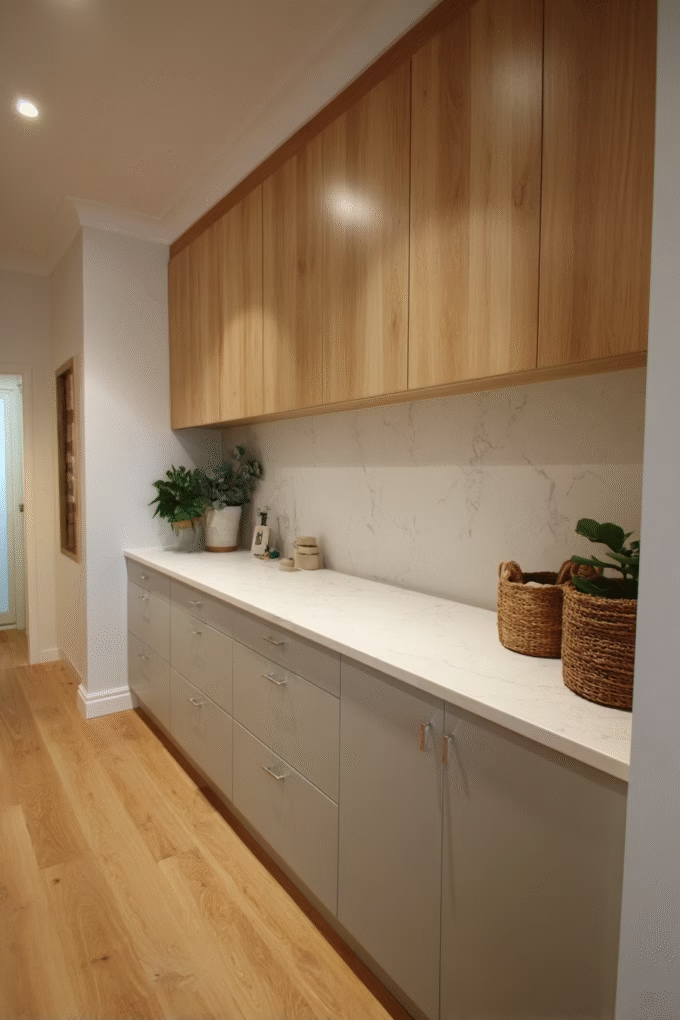
A neutral color palette is the backbone of Japandi kitchen design. Whites, creams, beiges, grays, and natural wood tones create that calm, cohesive atmosphere you’re after.
Start with a base color for your walls—soft white or warm beige work beautifully. Then layer in different neutral tones through your cabinets, countertops, and flooring. The variation in shades adds depth without introducing chaos.
Stick to warm neutrals or cool neutrals within the same space—mixing undertones can make things feel disjointed. Test your materials together before committing.
8. Black Matte Cabinet Hardware
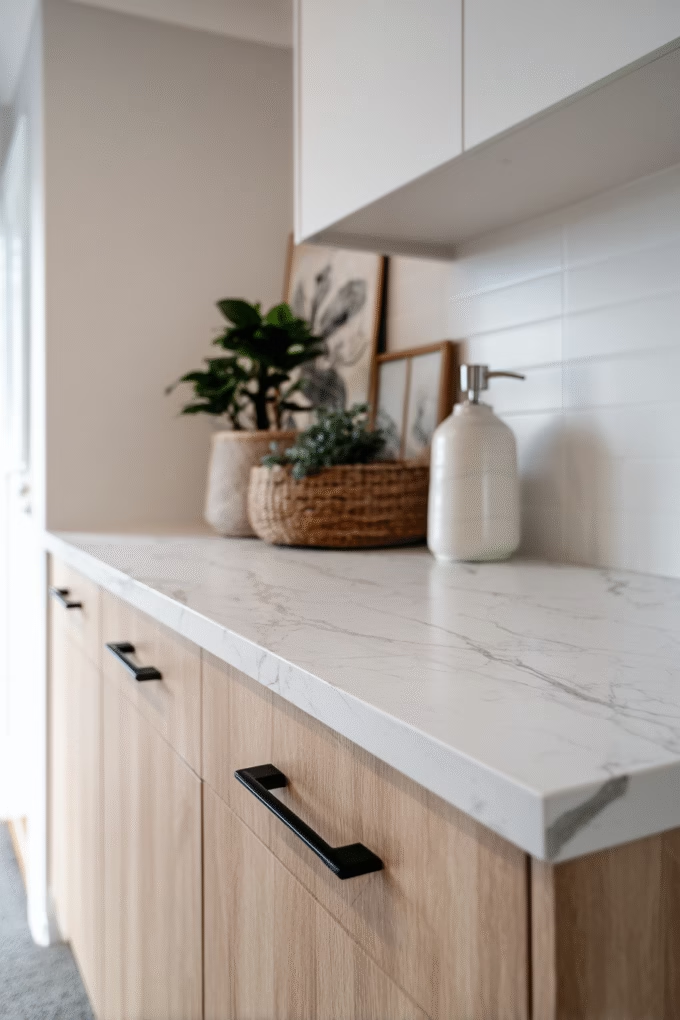
Black matte hardware adds subtle definition to your Japandi kitchen cabinets. The dark finish creates contrast without being shiny or distracting.
Choose simple shapes—straight bars, small cylinders, or minimal cup pulls. The hardware should enhance your cabinets, not compete with them. Stick to one style throughout your kitchen for consistency.
This hardware looks especially good against light wood or white cabinets where the contrast really shows. Even handleless cabinets can benefit from a few strategic black accents.
9. Ceramic Vase with Branches
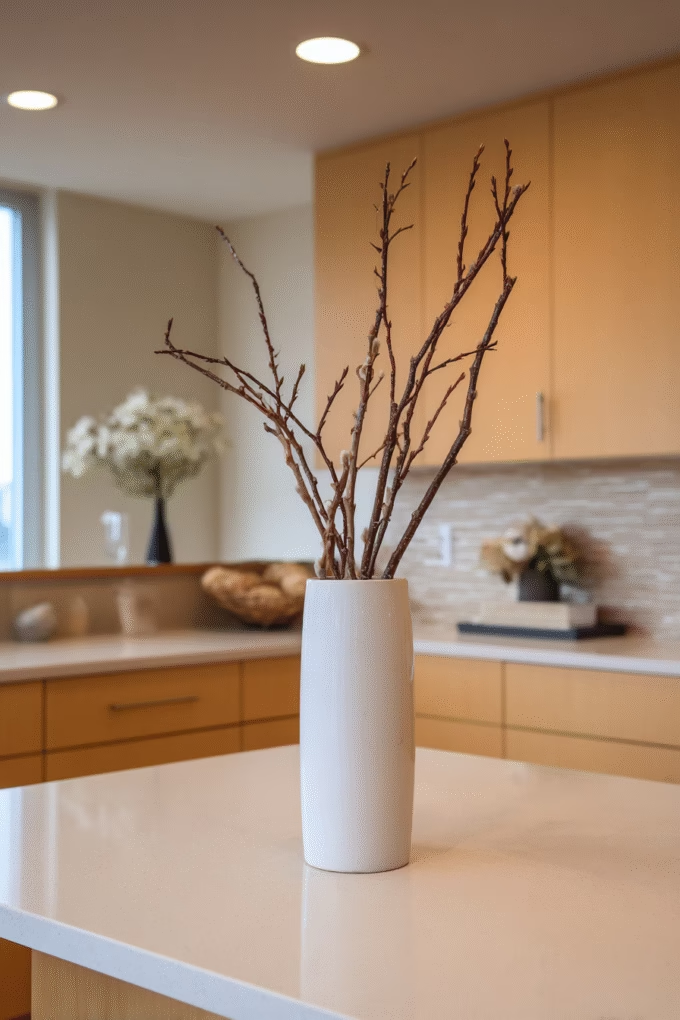
A ceramic vase with sculptural branches brings nature into your Japandi kitchen. This simple decorative element adds height and organic beauty without cluttering your space.
Choose a vase in white, cream, or natural clay with a simple shape—cylindrical, spherical, or gently tapered. Fill it with bare branches or minimal greenery. The arrangement should feel artistic but not fussy.
Place your vase on your island, dining table, or open shelving where it can be appreciated. One beautiful arrangement is better than multiple small ones scattered around.
10. Integrated Appliances
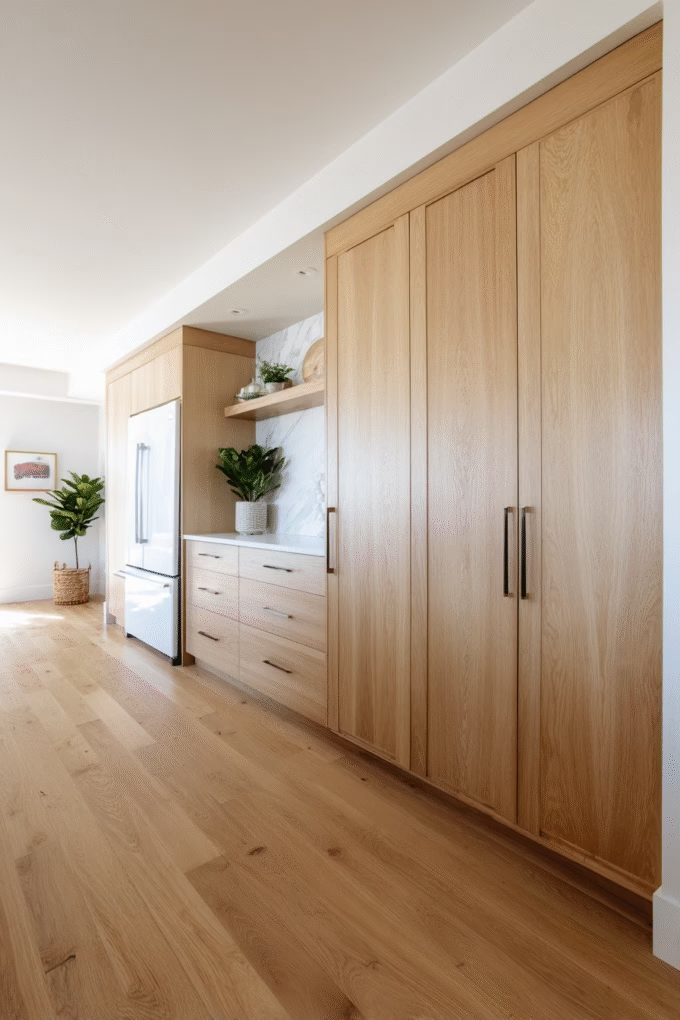
Integrated appliances that blend seamlessly into your cabinetry elevate your Japandi kitchen design. When your refrigerator and dishwasher disappear behind cabinet panels, your space feels more cohesive and intentional.
Panel-ready appliances let you match your cabinet fronts exactly. The result is a wall of uninterrupted cabinetry that looks custom and high-end. Even your range can get the integrated treatment with a built-in look.
This approach keeps the focus on your overall design rather than individual appliances. Your kitchen feels like a complete, unified space instead of a collection of different elements.
11. Stone Slab Backsplash
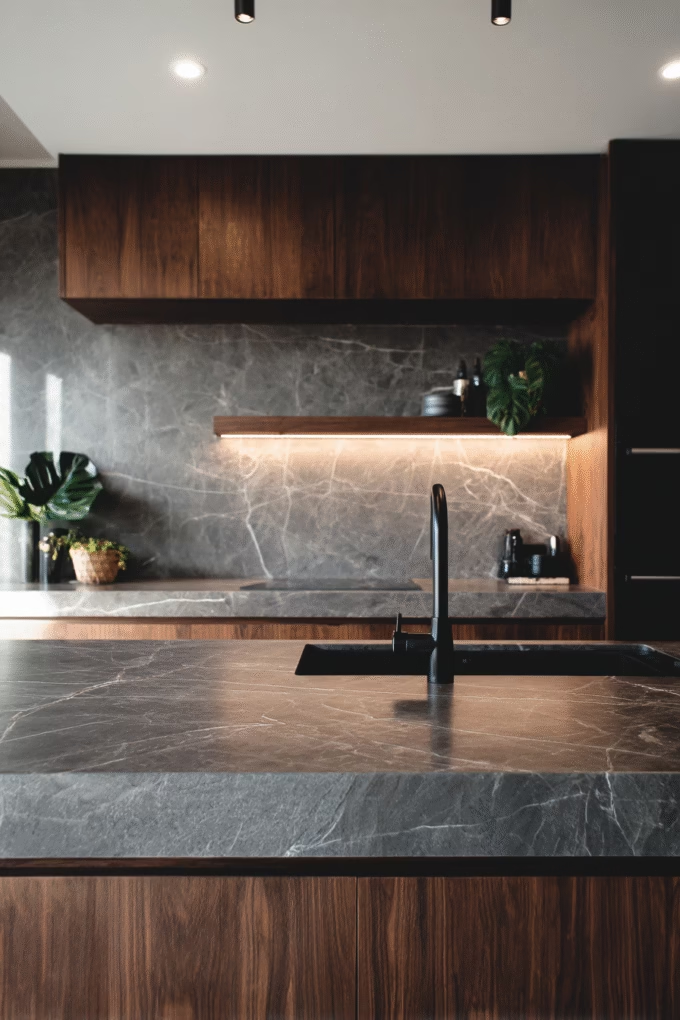
A stone slab backsplash creates a dramatic, seamless look in your Japandi kitchen. Instead of individual tiles, one large piece of stone stretches from counter to cabinets without interruption.
Choose stones in neutral colors with subtle veining—white marble, gray quartzite, or beige limestone all work beautifully. The natural patterns add visual interest while staying calm and sophisticated.
This approach eliminates grout lines and creates a sleek, modern feel. The slab becomes a focal point while still maintaining that minimalist Japandi aesthetic.
12. Wooden Bar Stools
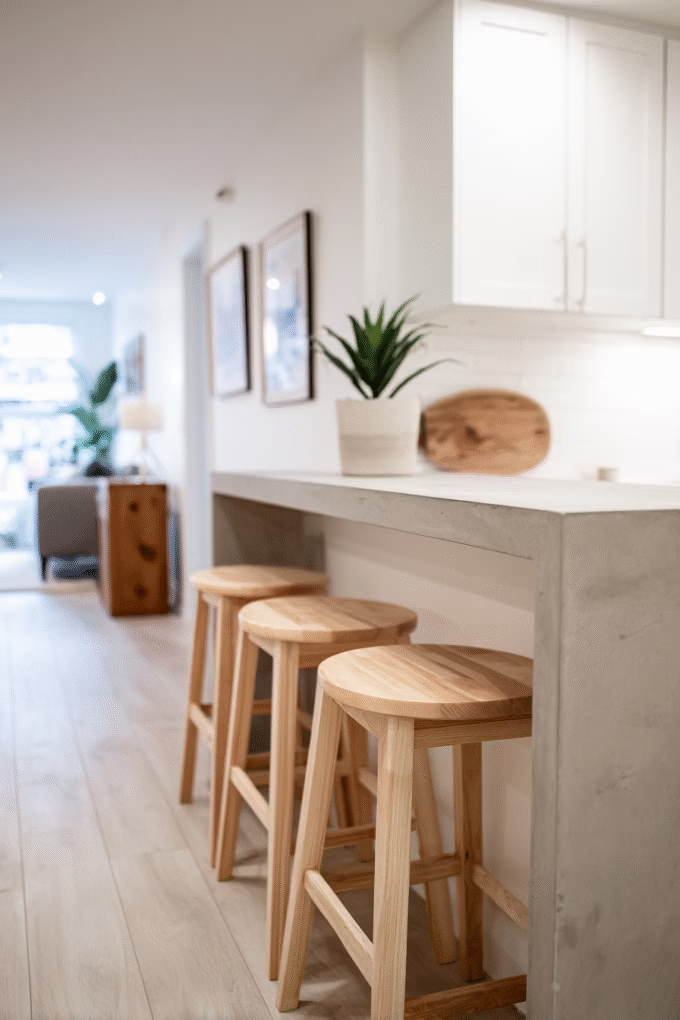
Simple wooden bar stools add warmth and functionality to your Japandi kitchen island or breakfast bar. These seats bring natural material into your space while keeping things minimal and comfortable.
Look for stools with clean lines in light to medium wood tones. Avoid overly decorative designs or excessive carving. Simple round or slightly contoured seats with straight legs work best.
Choose stools that coordinate with your cabinetry but don’t necessarily match exactly. A little variation in wood tone adds interest while keeping the overall feel cohesive.
13. Minimalist Faucet Design
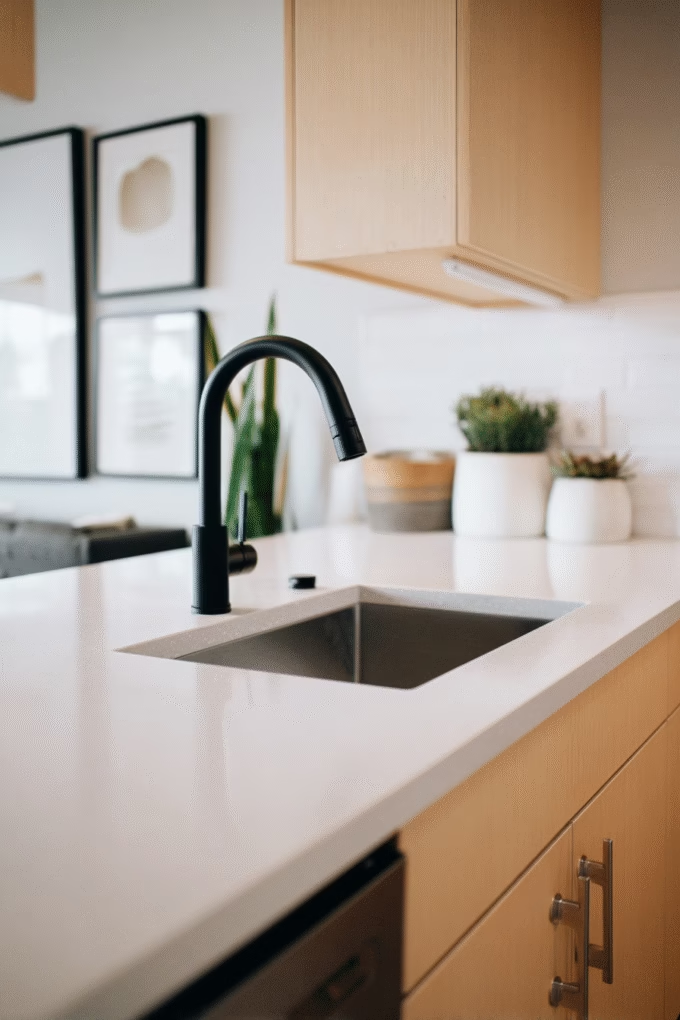
A minimalist faucet completes your Japandi kitchen sink area. Choose designs with clean, geometric shapes and simple functionality without unnecessary embellishments.
Look for single-lever faucets in matte black, brushed brass, or stainless steel. The spout should have smooth curves or straight lines—nothing ornate or traditional. A high arc provides functionality while maintaining that sleek look.
The faucet should feel like it belongs in your space without drawing too much attention. It’s a functional element that supports your design, not a focal point demanding notice.
14. Natural Fiber Rug
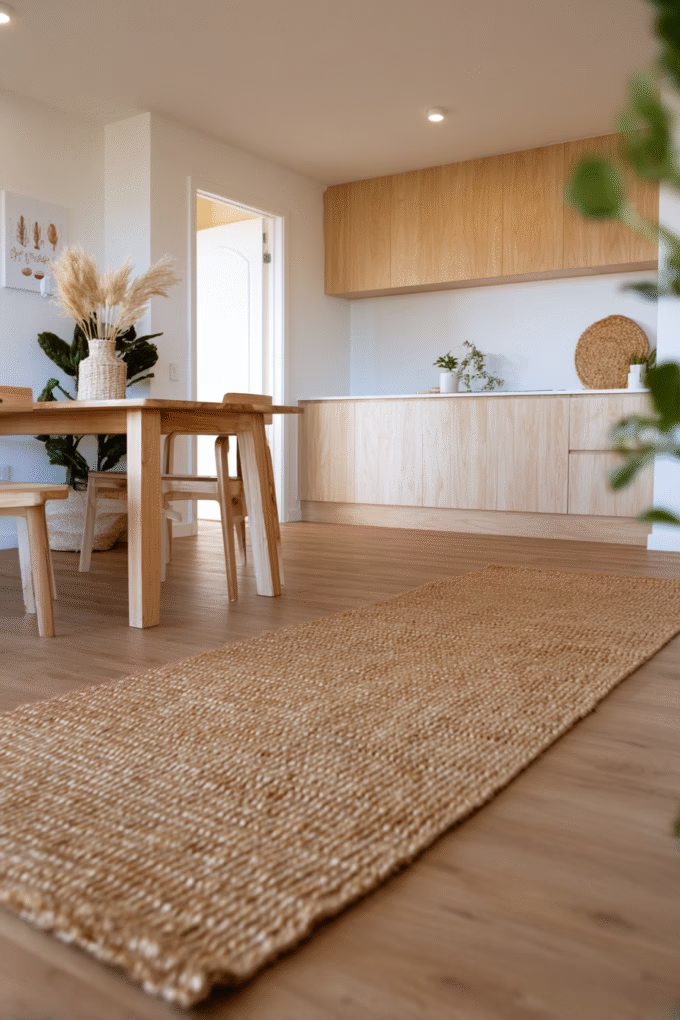
A natural fiber rug adds warmth and texture underfoot in your Japandi kitchen. These rugs bring organic material into your space while defining different zones in open-plan layouts.
Choose rugs in jute, sisal, or seagrass in natural tan or cream colors. Look for simple weaves without busy patterns. A flat weave or low pile works best in kitchens where spills might happen.
Place your rug under your dining table or in front of your sink to add softness where you stand most. The natural texture feels grounding and connects your space to nature.
15. Vertical Wood Paneling Accent Wall
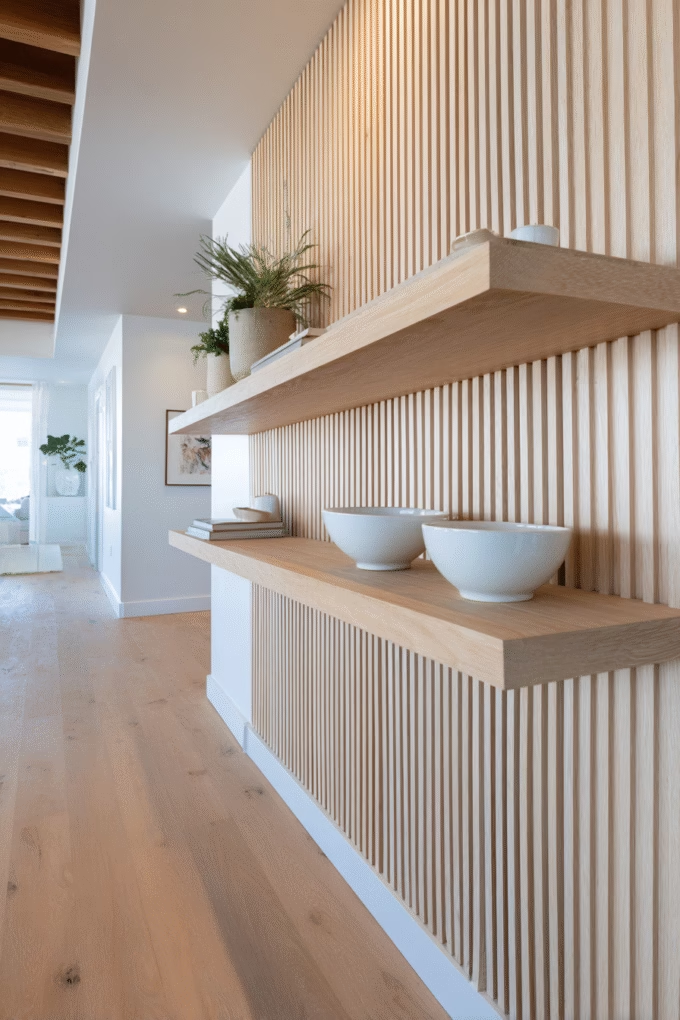
Vertical wood paneling adds architectural interest to your Japandi kitchen. This feature wall creates texture and warmth without overwhelming your space with pattern or color.
Install narrow wood slats in light oak, maple, or ash with consistent spacing. The vertical lines draw the eye upward and make your kitchen feel taller. Keep the wood natural or use a light stain that enhances the grain.
Use this treatment on one wall as an accent—not the entire kitchen. It works beautifully behind open shelving or as a backdrop for your dining area.
16. Concrete-Look Countertops
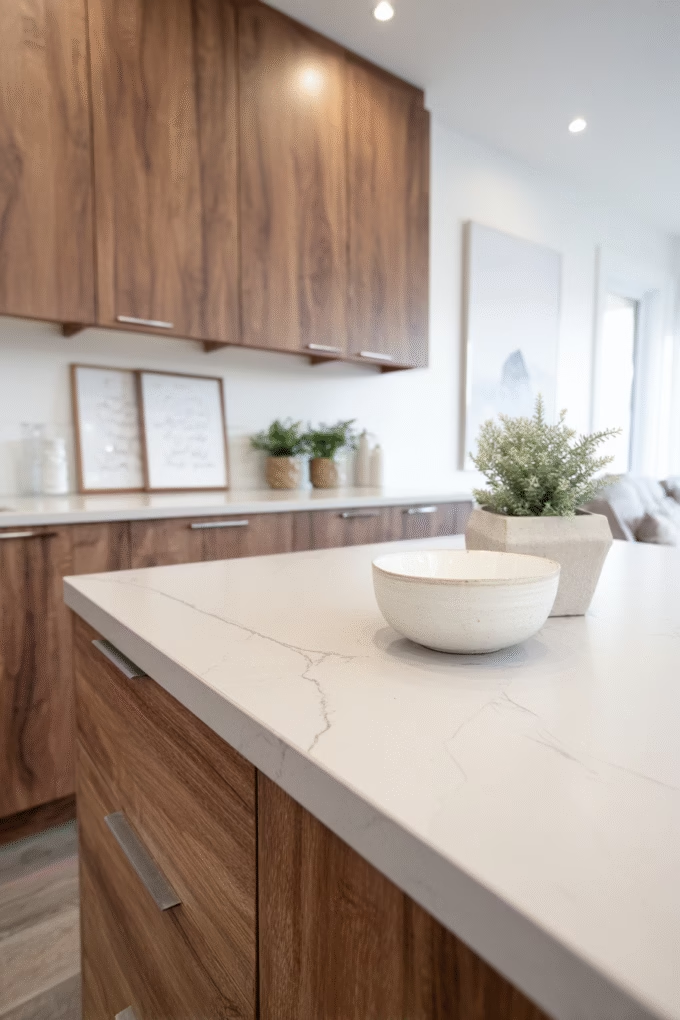
Concrete-look countertops bring industrial warmth to your Japandi kitchen. These surfaces offer the aesthetic of real concrete without the maintenance challenges.
Choose concrete-look quartz or porcelain in light to medium gray tones. The material should have subtle variations that mimic real concrete’s natural character. A honed or matte finish works best—glossy looks too polished.
Pair these countertops with warm wood cabinets to balance the cool gray tones. The combination creates that perfect tension between industrial and natural that Japandi design does so well.
17. Simple Ceramic Canisters
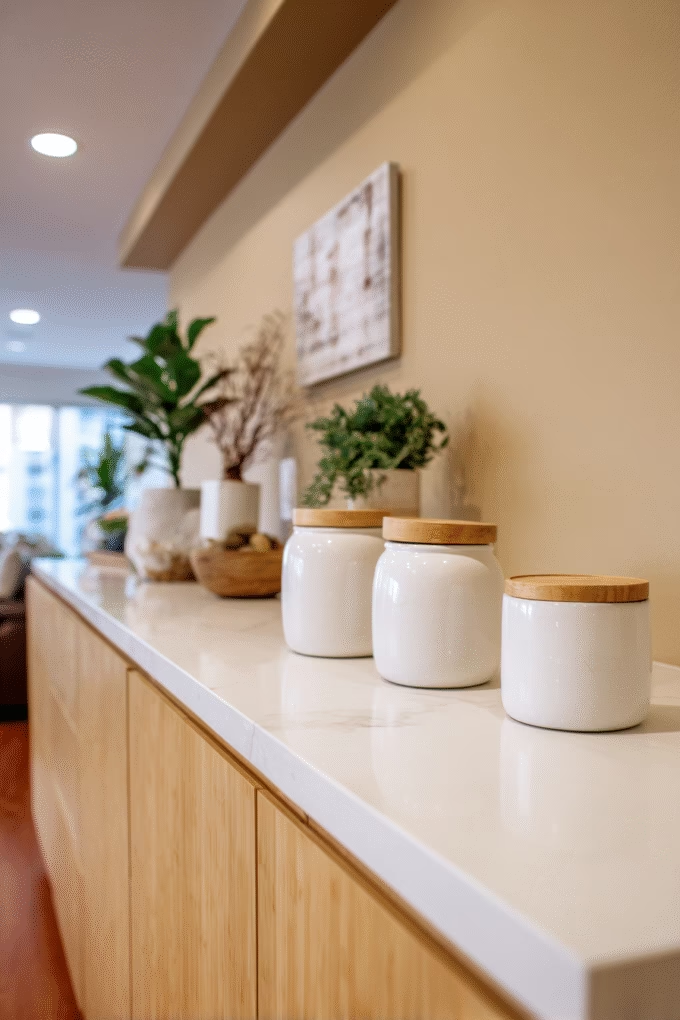
Simple ceramic canisters keep your essentials organized while adding to your Japandi kitchen aesthetic. These functional pieces double as beautiful objects on your countertops.
Choose canisters in white, cream, or natural clay tones with minimal decoration. Look for cylindrical or slightly tapered shapes with wooden or matching ceramic lids. Avoid any busy patterns or bright colors.
Group two or three canisters together on your counter near your coffee station or by your stove. They should feel intentional and useful, not like random clutter.
18. Brushed Brass Accents
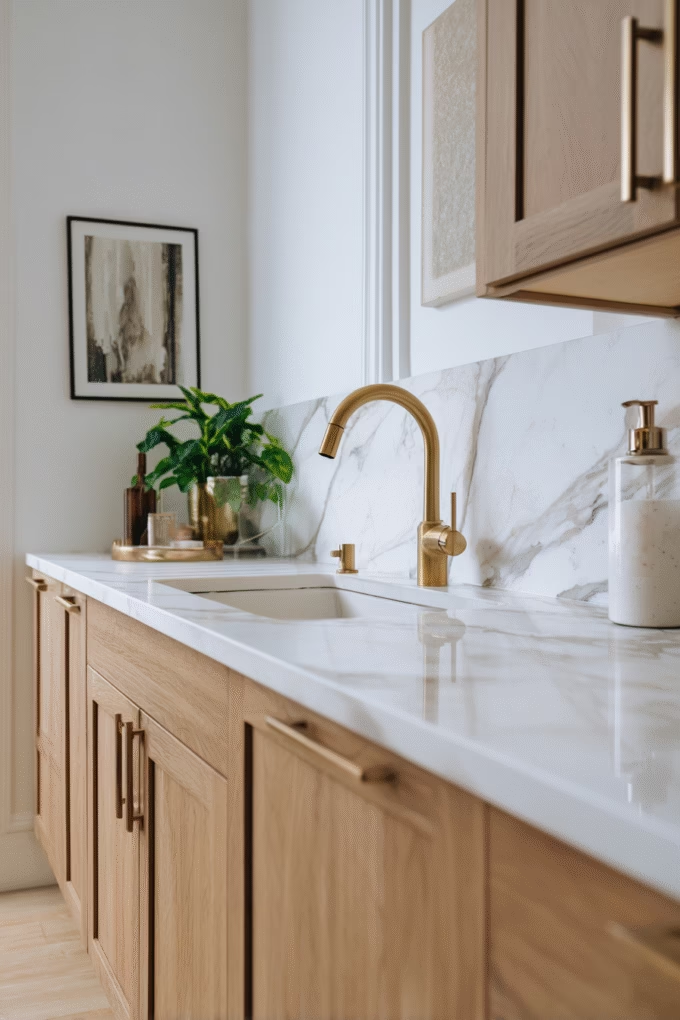
Brushed brass accents add a touch of warmth and sophistication to your Japandi kitchen. This metal finish feels timeless and elegant without being flashy or overly shiny.
Use brushed brass for your faucet, cabinet hardware, or light fixtures. The warm gold tone works beautifully against both light and dark cabinetry. Keep the finish consistent throughout your kitchen for a cohesive look.
This metal choice softens the overall palette while still feeling modern and intentional. It’s that perfect middle ground between industrial and warm.
19. Floating Island Design
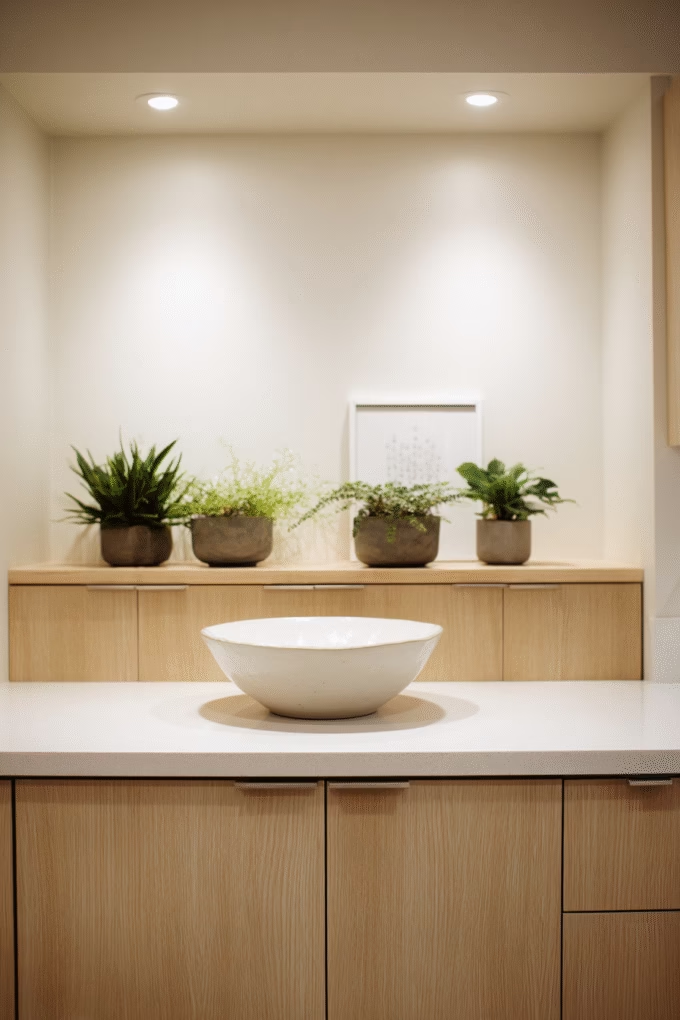
A floating island creates visual lightness in your Japandi kitchen. Instead of sitting directly on the floor, the island appears to hover with a recessed base.
This design makes your kitchen feel more spacious and modern. The gap beneath the island allows light to flow and makes cleaning easier. Use the same material as your main cabinetry for cohesion.
Add simple bar stools that tuck underneath when not in use. The floating design works especially well in smaller kitchens where you want to maximize the sense of space.
20. Woven Light Fixtures
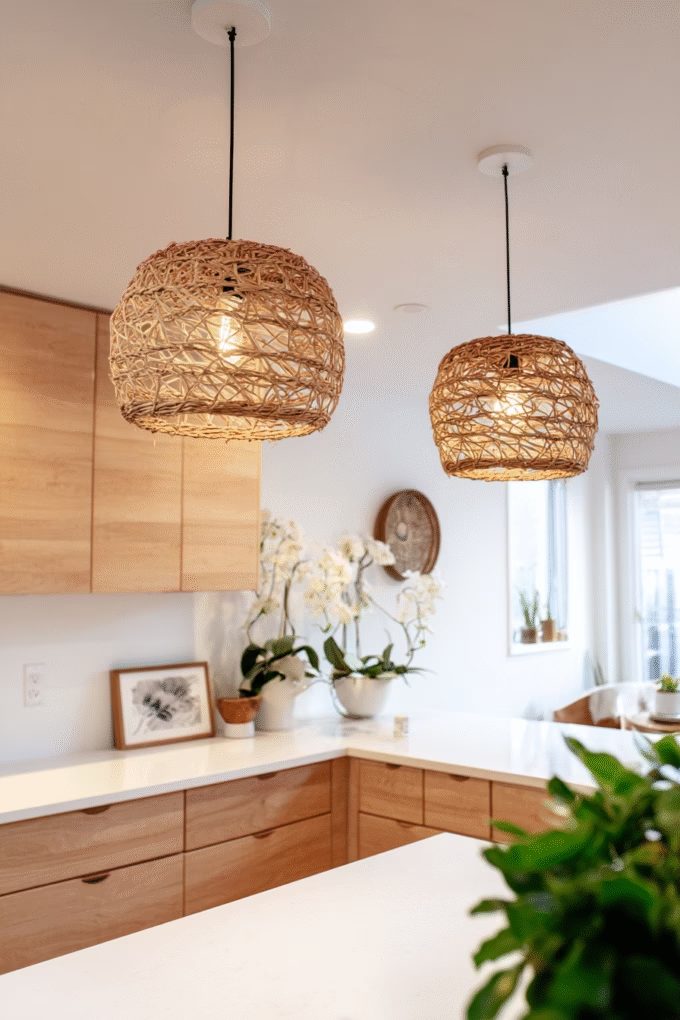
Woven light fixtures in natural materials add texture and warmth to your Japandi kitchen. These fixtures bring artisanal quality while maintaining that clean, minimal aesthetic.
Look for pendant lights made from rattan, bamboo, or woven paper in natural tones or white. The shapes should be simple—spheres, cylinders, or gentle curves. Avoid anything too ornate or busy.
Hang these fixtures over your island or dining table where they add visual interest without overwhelming. The natural material softens the harder surfaces in your kitchen and connects to nature.
21. Single Shelf Open Display
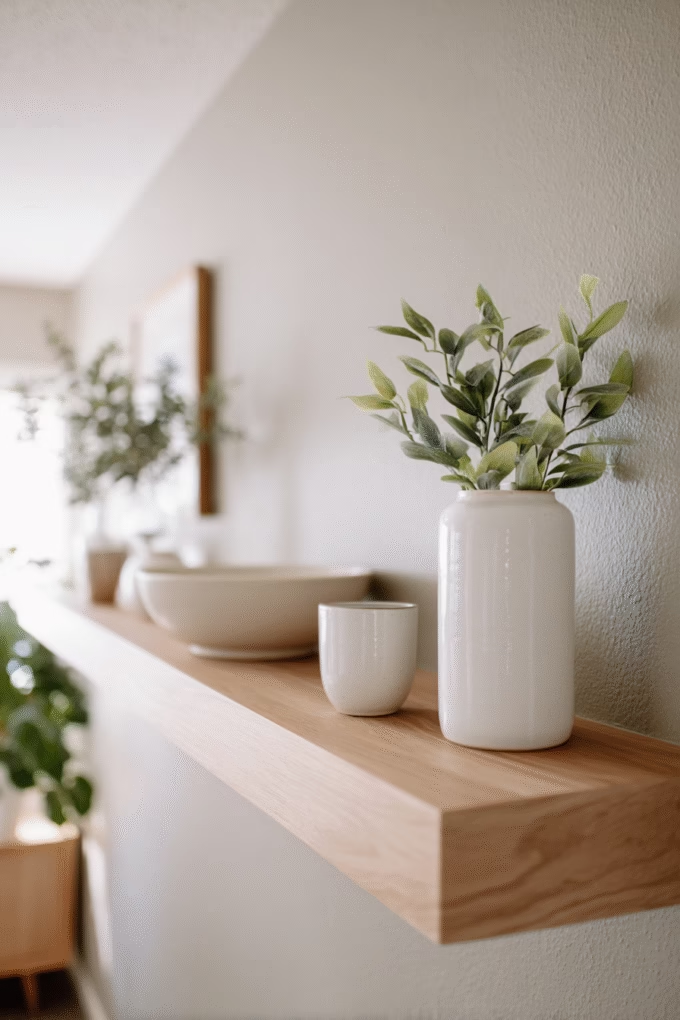
A single open shelf creates focused display space in your Japandi kitchen. Instead of multiple shelves competing for attention, one well-styled shelf makes a statement.
Install a floating shelf in natural wood at eye level. Style it with a few carefully chosen pieces—simple ceramic dishes, a small plant, or one beautiful object. The key is restraint.
This approach gives you functional storage while maintaining that uncluttered feel. Everything on the shelf should earn its place and contribute to the overall aesthetic.
22. Clean Lines Throughout
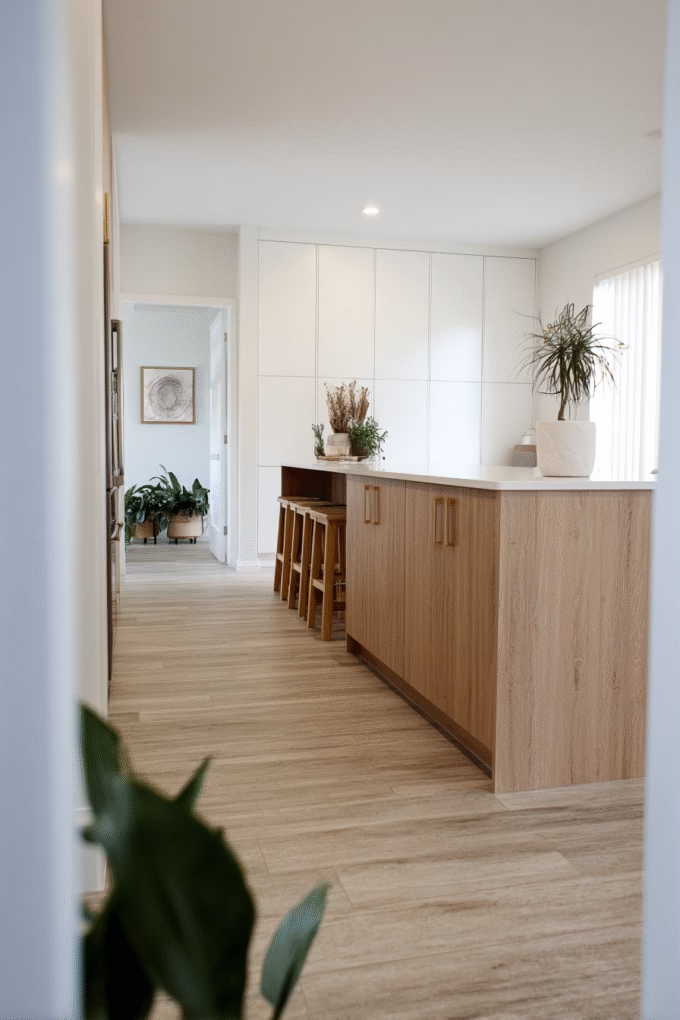
Clean lines are the foundation of every successful Japandi kitchen. This means straight edges, simple silhouettes, and uninterrupted surfaces wherever possible.
Apply this principle to everything—your cabinetry, countertops, backsplash, and even how you arrange items on your counter. Avoid busy patterns, ornate details, or anything that creates visual chaos.
The result is a kitchen that feels calm, organized, and intentional. Your eyes can rest on any surface without being pulled in multiple directions by competing elements.
Your Japandi Kitchen Awaits
Look, your kitchen should feel like somewhere you actually want to be—not a showroom you’re afraid to mess up. Japandi design nails this balance between beautiful and livable.
Start with one or two elements that speak to you. Maybe it’s those light oak cabinets you’ve been eyeing, or finally getting that stone slab backsplash. You don’t need to overhaul everything at once.
The beauty of Japandi is in its simplicity. Choose natural materials, stick with neutral colors, and keep things intentional. Your kitchen will become that calm, functional space you’ve been craving—perfect for morning coffee, evening meals, and everything in between.
